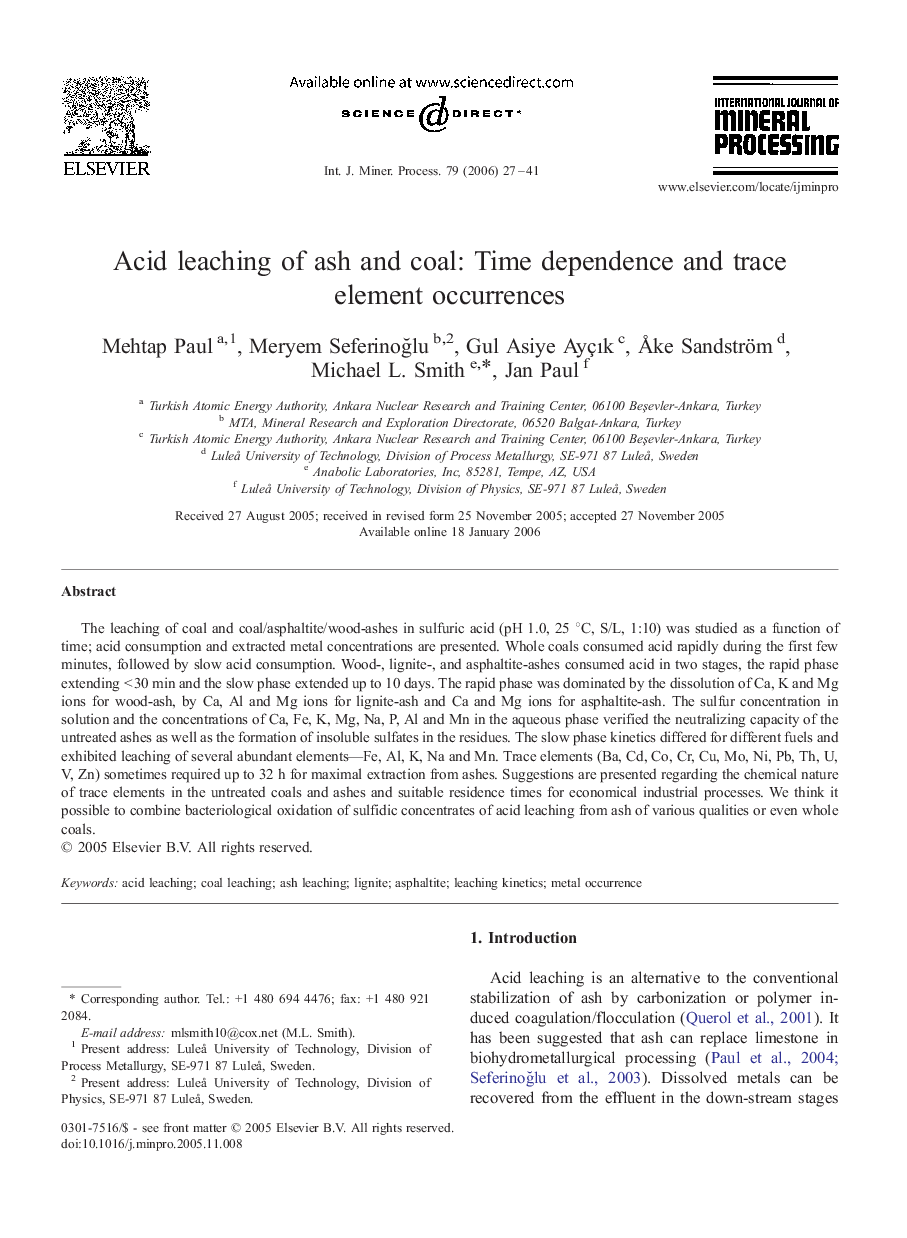| Article ID | Journal | Published Year | Pages | File Type |
|---|---|---|---|---|
| 214733 | International Journal of Mineral Processing | 2006 | 15 Pages |
The leaching of coal and coal/asphaltite/wood-ashes in sulfuric acid (pH 1.0, 25 °C, S/L, 1:10) was studied as a function of time; acid consumption and extracted metal concentrations are presented. Whole coals consumed acid rapidly during the first few minutes, followed by slow acid consumption. Wood-, lignite-, and asphaltite-ashes consumed acid in two stages, the rapid phase extending < 30 min and the slow phase extended up to 10 days. The rapid phase was dominated by the dissolution of Ca, K and Mg ions for wood-ash, by Ca, Al and Mg ions for lignite-ash and Ca and Mg ions for asphaltite-ash. The sulfur concentration in solution and the concentrations of Ca, Fe, K, Mg, Na, P, Al and Mn in the aqueous phase verified the neutralizing capacity of the untreated ashes as well as the formation of insoluble sulfates in the residues. The slow phase kinetics differed for different fuels and exhibited leaching of several abundant elements—Fe, Al, K, Na and Mn. Trace elements (Ba, Cd, Co, Cr, Cu, Mo, Ni, Pb, Th, U, V, Zn) sometimes required up to 32 h for maximal extraction from ashes. Suggestions are presented regarding the chemical nature of trace elements in the untreated coals and ashes and suitable residence times for economical industrial processes. We think it possible to combine bacteriological oxidation of sulfidic concentrates of acid leaching from ash of various qualities or even whole coals.
